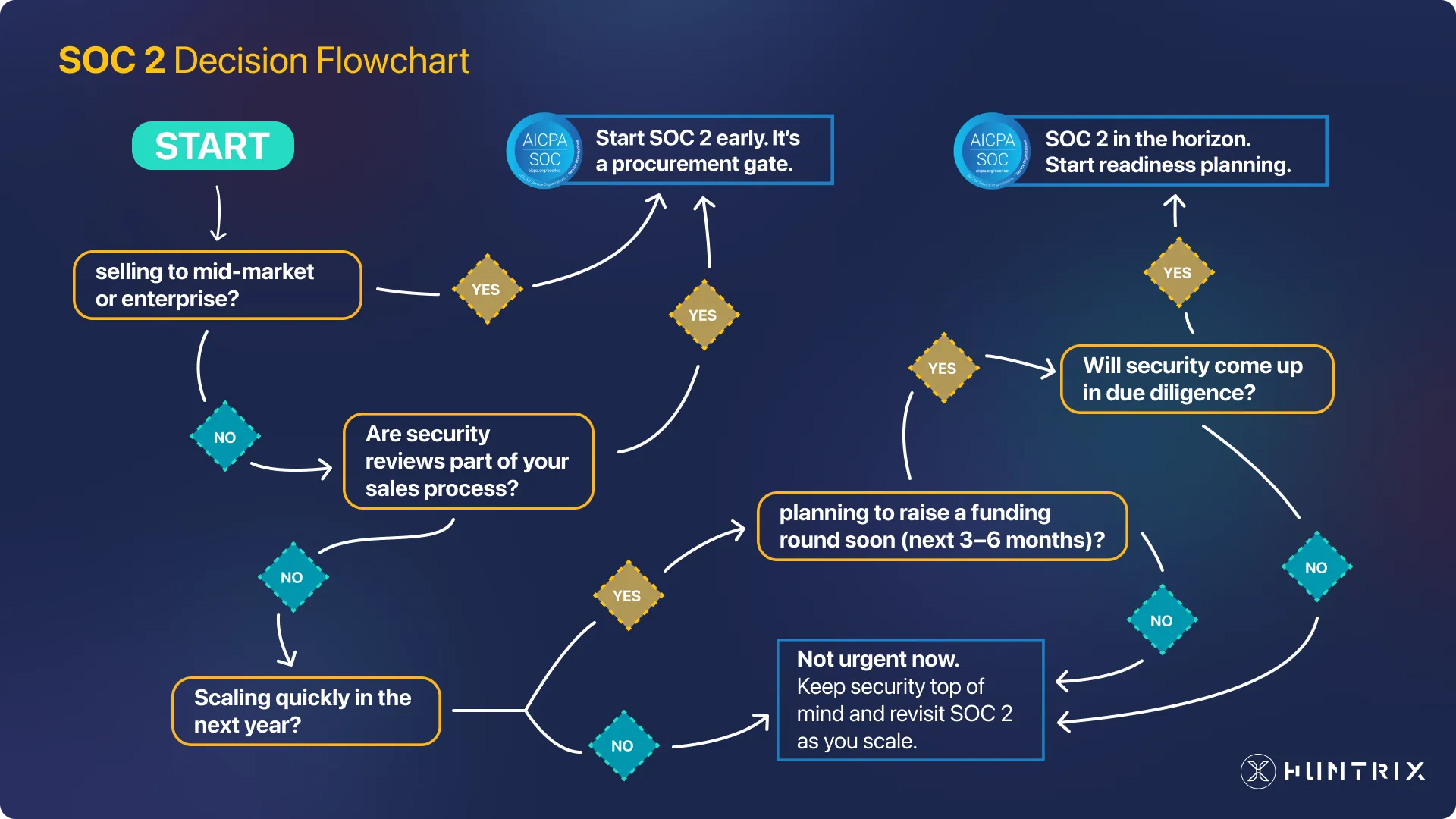If you’re asking this, you’re likely balancing security priorities with aggressive growth goals. SOC 2 isn’t just a checkbox — it’s often a gatekeeper to enterprise deals, partnerships, and even certain funding rounds.
Start Before You Raise — Here’s Why

While many founders wait until after raising to kick off SOC 2, getting a head start can save you serious time and credibility later. Here’s why starting before makes more sense for most startups:
Investor Due Diligence Is Getting Stricter
- VCs aren’t just investing in your product — they’re investing in your ability to scale safely and deliver ROI. Maintaining strong security and compliance practices across portfolio companies reduces risk. With the number of cyber attacks increasing daily, showing early traction on your SOC 2 journey signals operational maturity and foresight.
- Yes, investors want to see your idea come to life — but more importantly, they think in terms of reducing risks and maximizing upside. Demonstrating that your team is thinking ahead can set you apart. You don’t need the full report yet, but being able to say “We’ve completed our readiness assessment and are tracking toward audit in Q3” shows you’re building responsibly, not reactively.
SOC 2 Shortens Your Sales Cycle Post-Funding
- If enterprise sales is part of your post-raise growth plan, security reviews will be a blocker. These reviews are typically framed as third-party vendor assessments — part of supply chain risk management. Without a clear security strategy, your platform may be flagged as a liability.
- Getting ahead of SOC 2 means you can start closing sooner — not six months after you scale the team — and reduce the friction in procurement cycles.
SOC 2 Forces Operational Discipline
- Growing your startup is already hard, so we often tell our clients to reverse engineer the company they want to represent. Building a business that lasts, is sellable, and valuable requires a foundation of operational discipline — and security is a major part of that.
- The controls you’ll implement — access reviews, incident response plans, vendor management — help you scale responsibly and avoid technical debt.
- These are things investors want to see in early-stage teams. Of course, SOC 2 compliance doesn’t equal security. But it’s a strong starting point — a structure you can build on top of as your risk profile grows.
When Post-Raise Makes More Sense


There are exceptions. If you’re pre-revenue, building a prototype, or the raise is primarily for product development, SOC 2 might be premature. In that case, focus on designing your product or application with security in mind.
When requesting funding, you often have to show how you budget and what you prioritize to give your business the best shot at scaling. Including the cost of SOC 2 and related security initiatives in your roadmap shows that you’re planning to reduce risk and improve your ability to sell into security-conscious markets.
Start your SOC 2 readiness phase soon after closing your round, aligning security goals with your execution plan.
What If We’re B2C?
SOC 2 is primarily geared toward B2B companies, especially those selling into mid-market or enterprise. If you’re building a B2C product, you may not face the same volume of vendor assessments or procurement hurdles.
But that doesn’t mean SOC 2 (or similar frameworks) aren’t worth considering.
For B2C companies, especially those in fintech, health-tech, or platforms handling sensitive user data, demonstrating strong security practices early builds trust with customers and investors alike.
It also signals long-term thinking. Investors often ask how you plan to scale securely, maintain compliance, and reduce exposure to legal or reputational risk. Including SOC 2 or alternative certifications like PCI DSS, HITRUST, or HIPAA in your roadmap shows that you’re building a business that’s not just innovative — but sustainable, sellable, and prepared to meet future regulatory expectations.
Bottom Line
SOC 2 isn’t something to rush or delay until it’s urgent. The best time to start? As soon as you can document your internal processes, assign owners to key controls, and afford a partner who understands startups. That’s usually right before or right after raising, depending on your go-to-market motion.
Huntrix helps startups handle SOC 2 readiness in stages, based on real business timelines.
